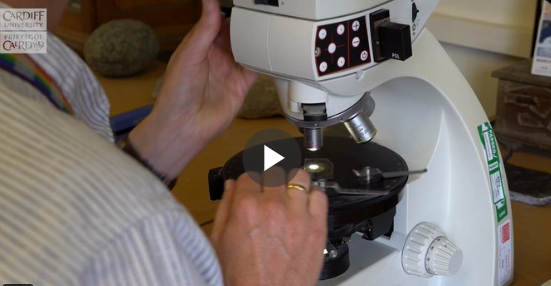“The mantle is the dynamic heart of our planet, where the slow churn of rock and heat drives the engine of plate tectonics.” – Geologist Richard W. Carlson
“Understanding the mantle is like trying to read the history of our planet from the middle of a long book with pages missing.” – Geophysicist Suzanne L. Baldwin
An international research team has made a historic breakthrough by extracting a long section of rocks from the Earth’s mantle, which may unlock new insights into the mantle’s impact on life, volcanic activity, and elemental cycles on Earth.
Record-breaking recovery of rocks that originated in Earth’s mantle could reveal secrets of the planet’s history.
📽️ Lead author of the study, published in @ScienceMagazine, Professor @LissenbergJohan, @CU_EARTH, explains more: pic.twitter.com/3QWh0Iz22W
— Cardiff University (@cardiffuni) August 9, 2024
The team, as part of the International Ocean Discovery Program, recovered approximately 1,268 meters (4,160 feet) of nearly continuous mantle rock from the seabed along the Mid-Atlantic Ridge. This endeavor, known as Expedition 399 “Building Blocks of Life, Atlantis Massif,” took place in Spring 2023 using the ocean drilling vessel JOIDES Resolution.
This recovery, a culmination of efforts dating back to the 1960s, represents a significant milestone in the study of Earth’s geology, providing a direct glimpse into the composition and history of the planet’s largest layer.
Initial analyses of the rocks have uncovered unexpected results, revealing extensive melting history. The rocks contain lower levels of pyroxene and higher concentrations of magnesium, suggesting a greater degree of melting than anticipated.
A record-breaking recovery of rocks that originated deep in Earth could reveal secrets of the planet’s history.
Scientists have recovered the first long section of rocks that originated in the Earth’s mantle, the layer below the crust and the planet’s largest component. pic.twitter.com/dCmvAjBc57
— Radio News Hub (@radionewshub) August 8, 2024
These findings are crucial for understanding the formation of magma and the processes leading to volcanism, especially under the ocean floor, which accounts for most of the Earth’s volcanic activity. The team has identified channels within the mantle that transport melt upward, shedding light on the relationship between mantle processes and surface volcanoes.
The research also explores the interaction between olivine—a prevalent mineral in mantle rocks—and seawater. This reaction produces hydrogen and other molecules, potentially mirroring conditions that could have supported the earliest life forms on Earth. The chemical and physical properties of these ancient rocks offer a window into the environmental conditions that were present on the early Earth, providing a sustainable energy source and favorable settings for life.
Record-Breaking Mantle Rock Recovery Offers New Insights into Earth’s History https://t.co/kleMJN5cdQ #Science pic.twitter.com/PIVquhTO5c
— Th3Dude (@jsanders1974) August 9, 2024
The ongoing analysis by the international team, involving over 30 scientists, will continue to delve into various scientific aspects, from mantle melting processes to the chemical interactions between rocks and oceans. This work not only enhances our understanding of Earth’s geological and biological history but also sets a standard for future international scientific collaborations, ensuring open access to data for a broad range of scientific inquiry.
Earth’s Mantle… Some facts
- Composition and Structure:
- The Earth’s mantle lies between the crust and the core, extending from about 35 kilometers to 2,900 kilometers beneath the Earth’s surface.
- It is composed mostly of silicate minerals rich in iron and magnesium, with olivine and pyroxene being the dominant minerals.
- The mantle is divided into the upper mantle, transition zone, and lower mantle, with varying physical properties due to changes in pressure and temperature.
- Mantle Convection:
- The mantle behaves as a solid on short timescales but flows like a viscous fluid on geological timescales, driving the process of mantle convection.
- Mantle convection is responsible for the movement of tectonic plates, which leads to phenomena like earthquakes, volcanic activity, and the formation of mountain ranges.
- This slow, creeping motion is driven by the heat from the Earth’s core and the decay of radioactive elements within the mantle.
- Seismic Studies:
- Seismology has been a key tool in understanding the mantle. By studying the speed and behavior of seismic waves as they pass through the Earth, scientists can infer the properties of mantle materials.
- The discovery of the Mohorovičić discontinuity (Moho) at the boundary between the crust and mantle has been significant in understanding Earth’s internal structure.
- Mantle Plumes and Hotspots:
- Mantle plumes are upwellings of abnormally hot rock that originate deep in the mantle, possibly at the core-mantle boundary. These plumes are believed to cause hotspots, which can create volcanic islands like Hawaii.
- The study of these plumes has provided insights into the dynamics of mantle convection and the composition of the deep mantle.
- Exploration and Unanswered Questions:
- Despite advances in technology, direct sampling of the mantle remains extremely challenging. Most knowledge comes from indirect methods like studying mantle xenoliths (rock fragments brought up by volcanic activity) and high-pressure experiments.
- There is still much to learn about the mantle, such as the exact mechanisms driving plate tectonics and the detailed composition of the lower mantle.
Major Points:
- An international research team retrieved over 1,268 meters of continuous mantle rock from beneath the Earth’s crust during a spring 2023 expedition along the Mid-Atlantic Ridge.
- The recovered rocks showed unexpected high levels of melting, indicated by reduced pyroxene and increased magnesium concentrations, challenging previous geological assumptions.
- This extensive melting is key to understanding the formation of magma and the processes that fuel undersea volcanic activity, which is prevalent across the Earth.
- Analysis of the interactions between mantle minerals like olivine and seawater suggests chemical reactions that could have supported early life forms by producing hydrogen and other vital molecules.
- The findings from this expedition will continue to be analyzed by an international team of over 30 scientists, with all data made publicly available, promoting open and collaborative scientific research.
Al Santana – Reprinted with permission of Whatfinger News



